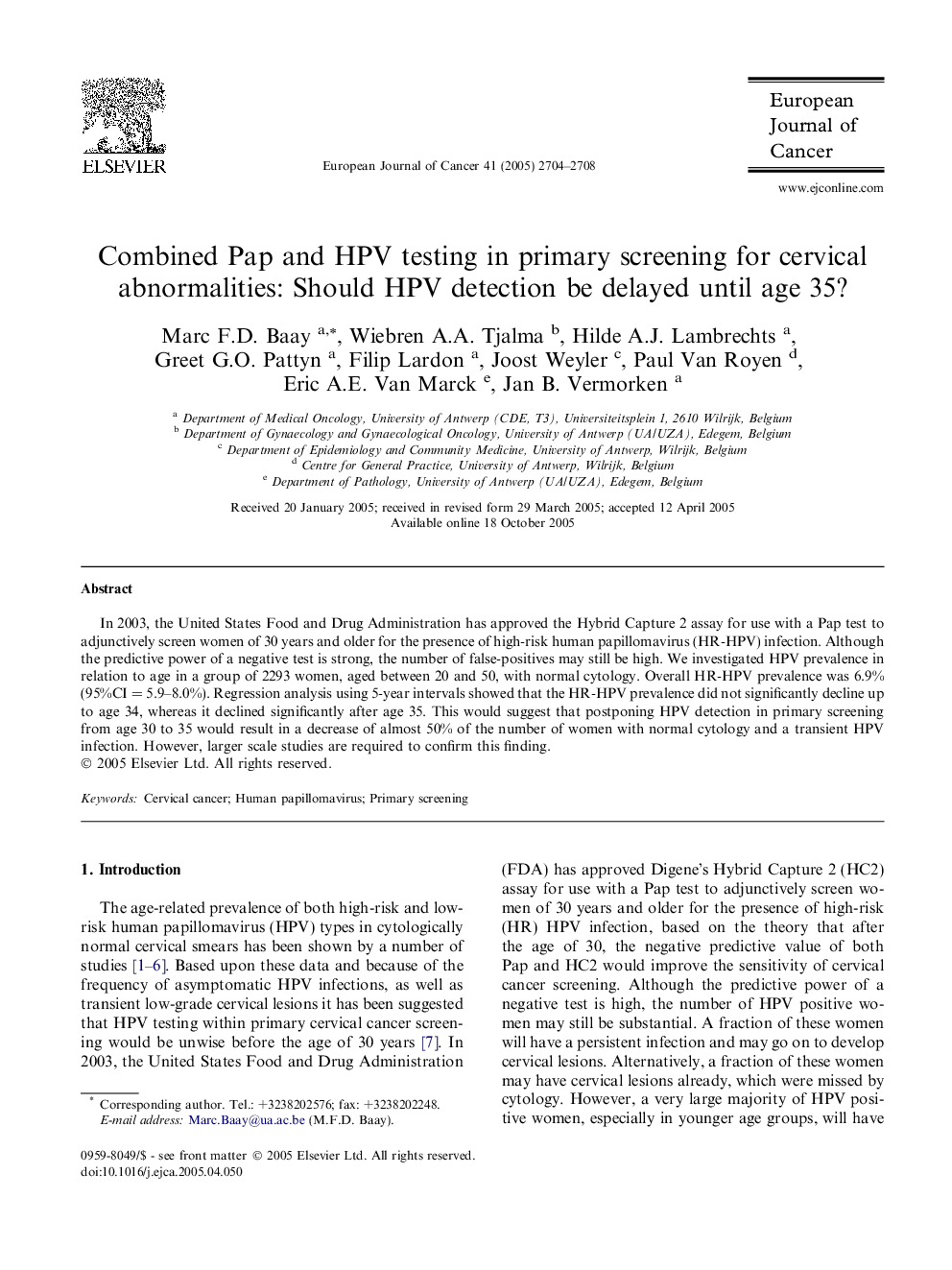| Article ID | Journal | Published Year | Pages | File Type |
|---|---|---|---|---|
| 2126531 | European Journal of Cancer | 2005 | 5 Pages |
In 2003, the United States Food and Drug Administration has approved the Hybrid Capture 2 assay for use with a Pap test to adjunctively screen women of 30 years and older for the presence of high-risk human papillomavirus (HR-HPV) infection. Although the predictive power of a negative test is strong, the number of false-positives may still be high. We investigated HPV prevalence in relation to age in a group of 2293 women, aged between 20 and 50, with normal cytology. Overall HR-HPV prevalence was 6.9% (95%CI = 5.9–8.0%). Regression analysis using 5-year intervals showed that the HR-HPV prevalence did not significantly decline up to age 34, whereas it declined significantly after age 35. This would suggest that postponing HPV detection in primary screening from age 30 to 35 would result in a decrease of almost 50% of the number of women with normal cytology and a transient HPV infection. However, larger scale studies are required to confirm this finding.
